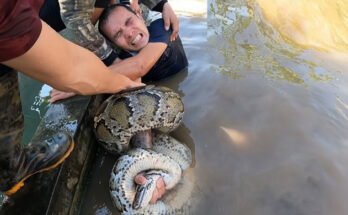In a remote area of the Gabonese forest, 12 km from the equator and 10 km from the Atlantic Ocean, outside a national park, Anne-Marie et Xavier Hubert-Brierre have been observing the reaction of wild animals as they catch sight of themselves in large mirrors (250cm x 120cm) with motion sensors camera traps the couple installed 9 years ago.
This innovative idea attracted the attention of primatologists, behavior specialists whose studies on self-recognition have, until now, been carried out in laboratories, on wild animals in captivity who are accustomed to the presence of humans. Wild animals come and go as they please in front of our mirrors and stay as they like both day and night.

For humans’ self-recognition is not immediate: in the case of the very young child a period of “mirror training” guided by the reassurance of the mother is necessary. For wild animals who haven’t had this mirror training, nor possess the use of language to guide and reassure their child, self-recognition is much more difficult.
Let’s take the example of a gorilla’s family: Adult males see their reflection as a stranger come to seize his females. Young animals, on the other hand, see their reflection as a friend and companion. They don’t hesitate to touch the surface of the mirror or reach behind the mirror in an effort to touch the image.
Rebekah, a young student of Professor Jim Anderson, of the University of Sterling in Scotland, concluded her researched, based on our videos of a young male gorilla in front of our mirrors by stating, this gorilla has demonstrated the ability to recognize himself.



